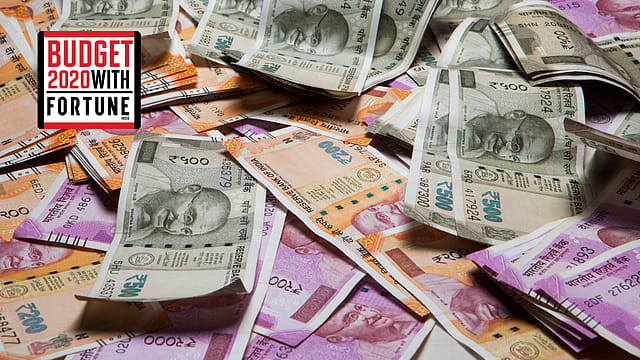The Budget arithmetic
ADVERTISEMENT

As Modi 2.0 prepares to present its second Budget on February 1, word is that the government won’t be able to meet the fiscal deficit target of 3.3% of the GDP it set in its first Budget presented on July 5, 2019. These past months have been particularly hard what with growth slowing, requiring government interventions such as corporate tax cuts and the Reserve Bank of India cutting rates. The Monetary Policy Committee had voted to cut the repo rate five times in a row up until the December meeting when it decided to hit pause over inflation concerns.
Fiscal deficit is considered to be an important metric by economists and policymakers. But it is not always a true reflection of the health of an economy. Here’s why.
The government works on what is called cash-based accounting system and not accrual system of accounting. In cash-based accounting, revenues and expenses are recognised as part of the government’s Budget figures only when money changes hands and not when the deal is done as is the case with the accrual system of accounting. So, while the government may announce a large number of big-ticket projects in the Budget worth thousands of crores of rupees, it may not show up in the expenditure column unless the money has actually changed hands. Hence, by rolling over the investment to the next year, the government can keep its borrowings and thereby its fiscal deficit in check.
Second, the government’s borrowing may not actually reflect its debt position. The reason is that the Budget’s fiscal deficit does not include what is called extra-budgetary resources (EBR) or off-budget borrowings to meet its funding needs. Government-owned central public sector undertakings (CPSUs) like Power Finance Corporation, National Highways Authority of India, Food Corporation of India take up and finance various government schemes and projects. These spends never appear on the government’s books, but on the balance sheets of these companies.
December 2025
The annual Fortune 500 India list, the definitive compendium of corporate performance, is out. This year, the cumulative revenue of the Fortune 500 India companies has breached $2 trillion for the first time. Plus, find out which are the Best B-schools in India.
For instance, in 2016-17, the government-owned Food Corporation of India spent more money than the government to complete its food subsidy programme announced in the Budget. It spent ₹81,303 crore compared to the government’s ₹78,335 crore. Another “off-Budget spending” which happened in the same year was the Ministry of Chemicals and Fertilizers footing a part of the government’s fertiliser subsidy bill. The ministry spent ₹39,057 crore, while the government spent ₹70,100 crore, according to a report by the Comptroller and Auditor General of India.
These off-Budget spending are called government fully-serviced bonds because both the principal and the interest on such borrowings by the CPSUs are finally paid for by the government through the Consolidated Fund of India. However, the issuance of such bonds have been growing over the years—it rose to ₹64,192 crore in the year ended March 2019, as compared to ₹15,095 crore during the last fiscal, according to a recent report by credit rating agency ICRA. These borrowings are estimated to have accounted for 0.34 % of the GDP ( ₹88,454 crore) for FY19.
“Such expenditure may have otherwise required a budgetary provision from the government in the year of these borrowings itself and increased the reported fiscal deficit,” says the report.
The concept of off-budget financing isn’t new. In the past, governments would issue sovereign-backed bonds for money raised by oil companies and fertiliser companies to defer subsidy payments. But the process has become more opaque than before. In earlier years, the economic advisory council used to provide an estimate of off-budget financing in its report on the review of the Indian economy but those estimates are not available anymore.
Another way to ensure “the robust health” of the economy is to defer refunds during the year. Queries are sent to taxpayers, who are given a certain amount of time to respond which ensures that the tax refunds by the authorities can be delayed in the next fiscal.
Lastly, setting high disinvestment targets as well as budgeting for aggressive tax and non-tax growth figures for the next fiscal is an easy way to keep the fiscal deficit in check.
